Types of pasta and their uses: are you ready to discover the amazing world of pasta?

TABLE OF CONTENTS
Italy is famous for its breathtaking cities, stunning coastlines, and art, just to name a few.
However, it’s probably safe to say that nothing has captured the world’s imagination quite like Italian pasta.
It’s hard to imagine life without pasta, from spaghetti to lasagne to cannelloni.
Where did pasta originate?
The Romans, Greeks, and Etruscans in Ancient Rome prepared pasta similar to our lasagna.
Arab Sicily, where production of a flour-based product occurred, to those who say pasta was invented in
In China, the origins of pasta are unclear.
A legend says it was later brought to Italy by Marco Polo in the 13th century after his trip to China, where it quickly became a staple of Italian cuisine.
How many types of pasta are there?
More than 600 different types of pasta exist from all regions of Italy.
Each pasta format has a unique purpose and is best paired with a specific sauce or dish.
Dry Pasta vs. Fresh Pasta
There are two main categories: dry and fresh.
Dry pasta is more common and can be found in grocery stores worldwide, while fresh pasta is often handmade or sold in specialized Italian stores.
Dry pasta is made from durum wheat flour and water, which is then extruded into various shapes and sizes.
The drying process removes all moisture from the pasta, making it light and easy to store for long periods of time.
Dry pasta also has a firmer texture when compared to fresh pasta, which is most often prepared with wheat flour, eggs, and water.
It has a softer texture and a milder flavor than dry pasta.
Type of dough
The most common type is made from durum wheat semolina and water, used in many commercially produced dry pasta.
This pasta is sturdy and resists cooking well.
Another option is egg pasta, typically used to make fresh pasta.
This pasta is made with wheat flour, eggs, and water and has a softer texture and milder flavor than dry pasta.
A third type of pasta is whole wheat pasta, made with whole wheat flour and water.
This pasta has a nutty flavor and firmer texture than regular pasta, making it a good choice for dishes with heartier sauces or for pasta salads.
Then we also have pasta prepared with legumes such as green peas, red lentils, or black beans, which is considered healthier and good for a certain type of diet.
Not to forget, on the other hand, pasta dough made with potatoes, our famous gnocchi.
Tips For Cooking Pasta
Cooking pasta must be done well to enjoy it at its best. Here are 4 tips you can use right away to cook pasta well:
- Use 1 liter of water for every 100g of pasta.
- Add 10g of coarse salt per liter of water when boiling (the amount to be reduced if the sauce is very flavorful).
- Adhere to the cooking time indicated on the package.
- Use nice large pots to prevent the pasta from becoming sticky or sticking to itself.
Italian Pasta Names And Types
Pasta comes in an incredible variety of shapes and sizes, each with its own unique flavor profile and textural characteristics.
Short Pasta
Short pasta shapes are often used in soups and baked pastas but also for some sauces.
Let’s see what short pasta types and their best uses are:
Lumache
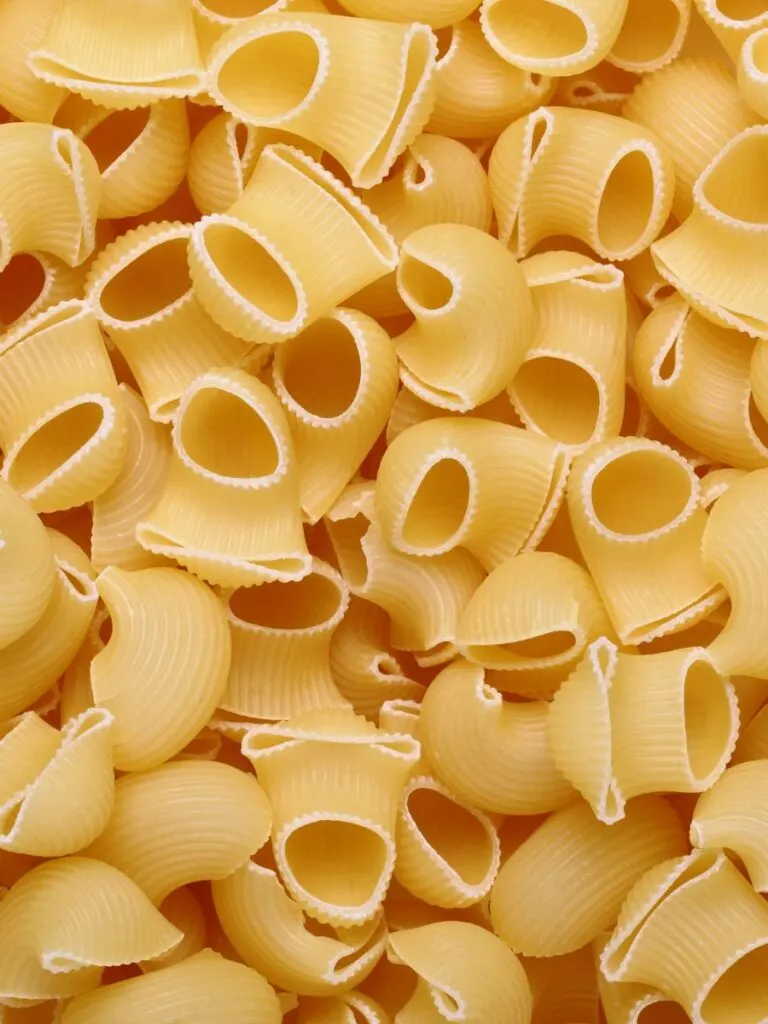
Lumache, which translates to “snails” in English, is a type of pasta unique for its shape, similar to the snail shell.
This hollow pasta is perfect for holding sauces and legumes, meat sauce, sausage, or mushrooms; it is one of my favorite shapes for pasta with peas.
Calamarata

This pasta format is widely used in the coastal regions of Italy, particularly in Naples and Sicily.
Its special ring shape makes it stand out from other types of pasta, and its hollow center allows it to absorb sauces and flavors, particularly the ones in seafood dishes.
Campanelle

In Italian, “little bells” are a fascinating pasta format resembling small cones with ruffled edges. It is also known as Gigli, which means “lilies.”
This pasta format is native to southern Italy, particularly in Campania.
This pasta has a unique texture, with its ridges and curves, making it ideal for hearty sauces and seafood.
Conchiglie – Shell Pasta


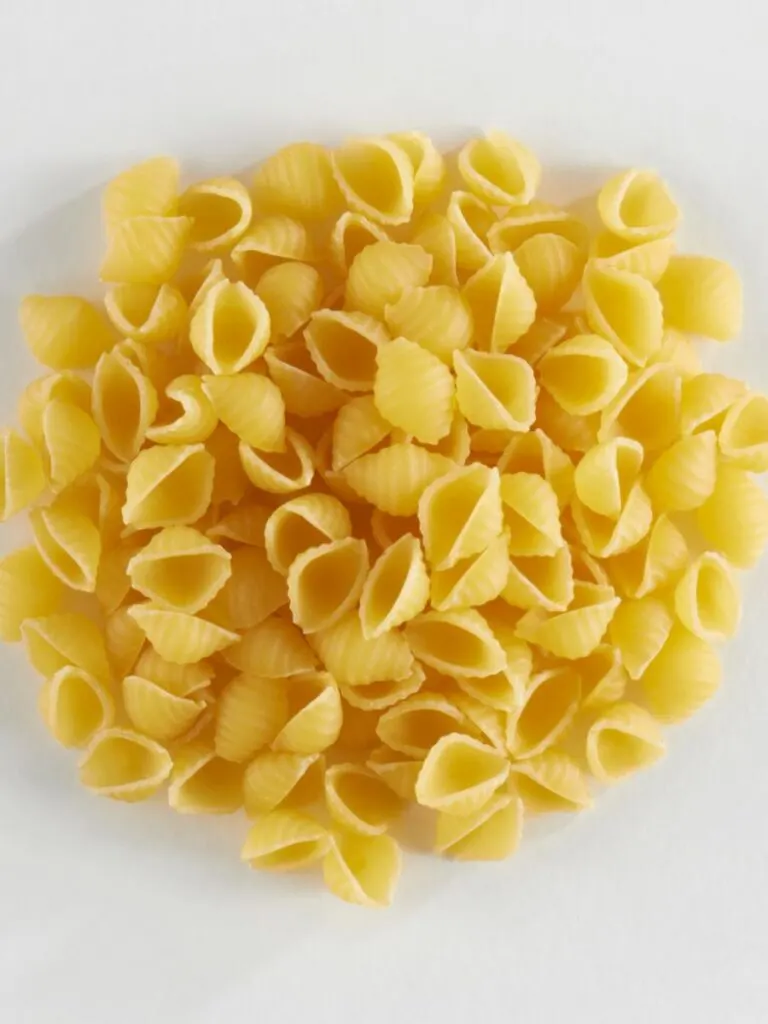
The name conchiglie comes from the Italian word for shell, and it is easy to see why.
Conchiglie is perfect for sauces or soups.
I love making pasta e fagioli or Shells and Cheese with this form of pasta. I love the fact that the beans get trapped inside the pasta.
There are some variations of this pasta, conchiglioni that are large are often prepared in the oven and then there are conchigliette perfect for soups.
Cannelloni

Cannelloni is a cylindrical-shaped pasta perfect for stuffing with delicious fillings.
The name “cannelloni” comes from the Italian word “canna”, meaning “tube” which accurately describes the shape of this pasta.
It is excellent, filled with a mixture of ricotta, spinach, and ground meat, topped with a tomato-based sauce, and baked in the oven, but also with Bolognese.
When making cannelloni, it is important to use a filling that is neither too dry nor too wet.
A filling that is too dry can be tough and unpleasant, while a filling that is too wet can cause the dough to become mushy.
Anellini

The Italian name “anellini” means small rings, and the pasta is shaped like small circles with a hole in the center.
Anellini are typically made with durum wheat semolina flour, which gives them a firm texture when cooked.
They are a popular type of pasta in Sicilian cuisine, the famous baked pasta with anellini prepared in Palermo.
But they are excellent for various dishes, such as soups, like pasta and beans soup and a classic minestrone soup.
Casarecce
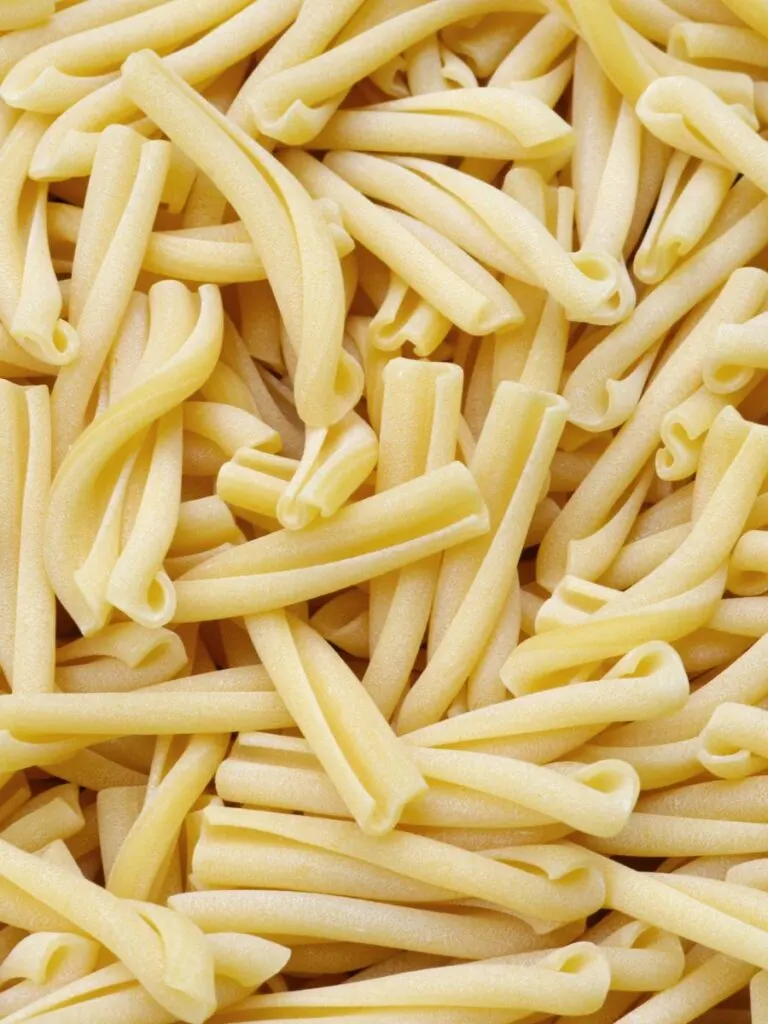
Casarecce is a pasta format that originated in Sicily.
Its name roughly translates to “homemade,” which suits the fact that it was traditionally made by hand.
The shape of Casarecce is long, twisted, and tubular, with a groove in the center.
The twisted shape of the pasta allows it to trap small bits of sauce, resulting in a flavorful bite every time.
This makes it perfect for dishes requiring thick, creamy sauce, such as vodka pasta or pasta alla norma.
Cavatelli

Cavatelli are similar to shells, making them perfect for holding sauces and condiments.
Grooves on the pasta’s surface help capture and trap small bits of sauce, resulting in a flavorful and satisfying bite.
Cavatelli are often served with a rich tomato or vegetable-based sauce.
They originated in Puglia.
Ditalini

Ditalini, which means “little thimbles,” is a versatile pasta that can be used in various dishes such as soups and stews, where it can absorb the broth’s flavor.
Most often used to make pasta and peas or minestrone.
Elicoidali

Elicoidali is also known as tortiglioni, are a somewhat lesser-known pasta format similar to rigatoni but with helical grooves that make them perfect for holding substantial sauces and ragouts.
Often used in baked comforting dishes such as baked pasta, these are great for making this creamy pasta with chicken and broccoli.
The name “tortiglioni” comes from the Italian word “tortiglio”, which means twisted.
It is believed to have originated in Southern Italy.
Rigatoni

Its cylindrical tube shape with straight grooves, larger than that of ditalini and elocoidali, provides ample room for sauces and fillings, rigatoni alla vodka, Rigatoni al Forno or this instant pot italian sausage rigatoni are dishes that highlight the versatility of this pasta format.
Farfalle – bow ties

Farfalle, commonly known as bow ties due to their unique shape reminiscent of a butterfly or bow tie, are a great addition to any dish.
The origins of butterflies date back to Lombardy, where they were first created in the 16th century.
Farfalle’s versatility allows them to be paired with almost any sauce, from creamy Alfredo to light tomato-based sauces, or for salads and cold dishes because of their ability to hold their shape and texture.
Fusilli


Fusilli or Rotini are native to Southern Italy, particularly the Campania and Basilicata regions.
The name comes from the Italian word “fuso”, which describes the twisted shape of the pasta.
The “corkscrew” shape is perfect for capturing hearty sauces and holding up in baked dishes like this broccoli pasta bake. It also works well in pasta salads.
Fusilli are available in long and short versions, making them a versatile choice for many dishes.
Long fusilli, also known as fusilli bucati, can be used as a substitute for spaghetti or linguine.
Lasagne

Lasagna is a type of wide-thickness pasta.
Used to make baked lasagna, such as the classic lasagna bolognese.
Orecchiette

Orecchiette, translated as “little ears,” is a unique pasta format native to the southern region of Puglia.
This pasta has a cup shape, making it perfect for picking up sauces and ingredients.
In Puglia, they are often prepared with broccoli.
Paccheri
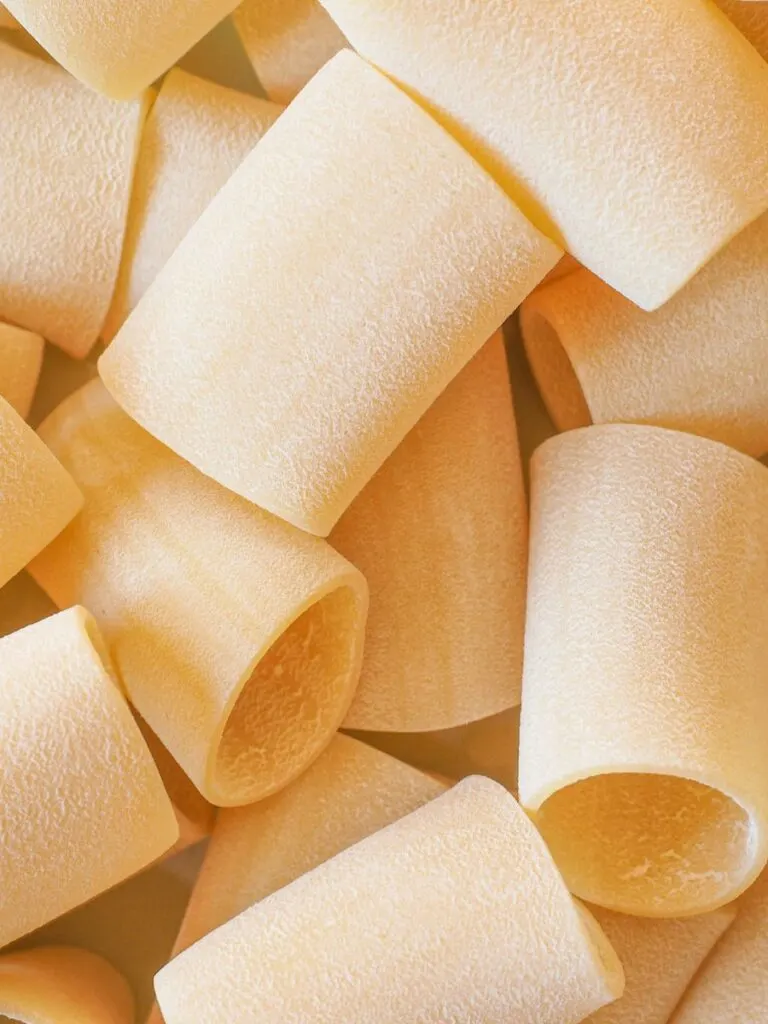
A pasta format native to Southern Italy.
Originating in Campania, paccheri have a tubular shape, making them an excellent vehicle for sauces and fillings.
Penne

Originating in the Campania region of Italy, penne is now a widely recognized pasta worldwide.
It can be served hot or cold, with tomato-based sauces such as penne all’arrabbiata or with puttanesca sauce, but also cream sauces like in this chicken sausage pasta, sausage and pepper pasta, penne chicken alfredo or even in pasta salads.
Its tubular shape with a diagonal cut at the end allows the sauce to penetrate and coat the pasta.
Penne are available in various sizes, including large and small versions.
Radiatori

Radiators were first created in the early 1900s in Southern Italy, specifically in the region of Puglia.
The radiator has a concave, grooved shape that makes it ideal for the purpose of containing sauce.
Its name comes from the Italian word “radiator,” which the shape resembles.
Its shape makes it an excellent choice for baked casseroles and pasta dishes.
Rotelle

Its name means “little wheels,” and it is easy to see why. The wheels have a circular shape with spokes branching out from the center.
The round shape ensures a good balance of sauce and pasta in each bite.
Rotelle pairs well with various sauces, including tomato-based sauces, cream sauces, and pesto.
Rotelle is also an excellent choice for cold pasta salads because their shape resists stirring and tossing well.
Trofie
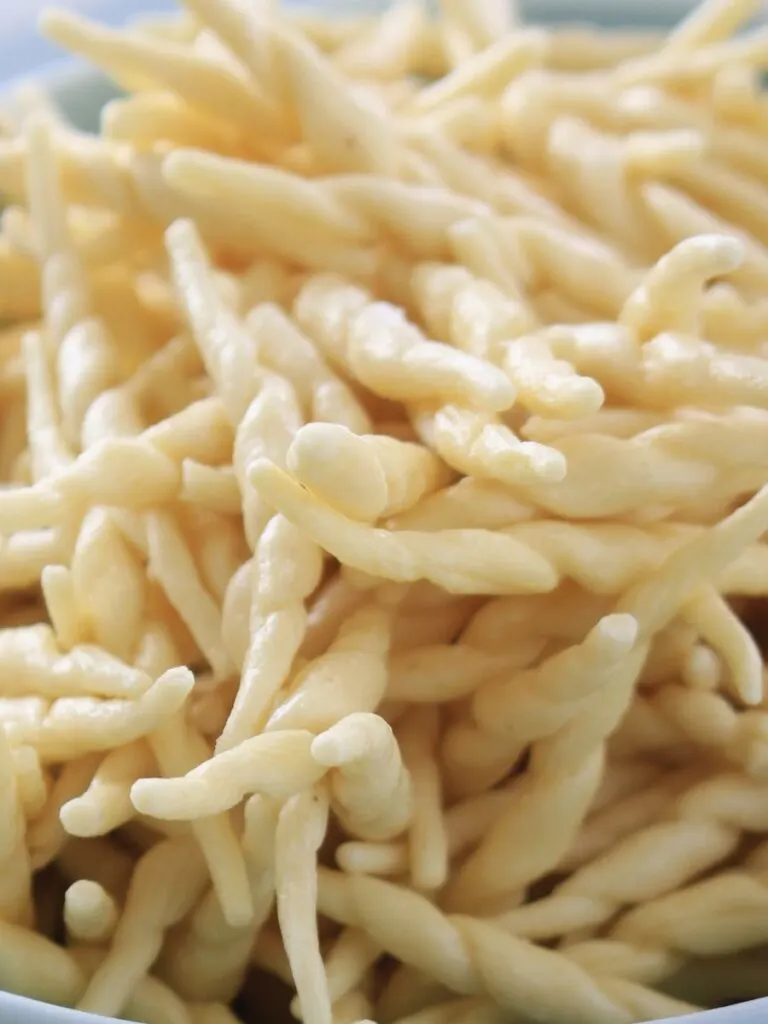
A type of fresh non-egg pasta with a typical twisted shape, reminiscent of carpenter’s shavings.
Trofie is a pasta shape that originated in Liguria. It is a unique shape that is perfect for holding pesto sauce.
Ziti

Ziti, a tube-shaped pasta, is a popular choice in Southern Italy.
It is similar to penne but smaller and with the ends cut straight. Once cooked, ziti is tender but firm, perfect for making baked ziti.
Elbow Macaroni

Elbow macaroni, also known as “macaroni”, is a pasta format that has become a staple in many American households.
Its shape, which resembles a small elbow, is ideal for holding creamy sauces like in this Hawaiian macaroni salad or as a base for classic dishes such as macaroni and cheese or Velveeta cheese sauce.
Gnocchetti Sardi

Gnocchetti sardi, also known as malloreddus, are native to the island of Sardinia and look like small shells.
This pasta format is often served with hearty meat sauces or a simple tomato sauce, but it is great paired with vegetables such as artichokes, fava beans, and tomatoes for light pasta dishes is perfect for summer.
Gnocchi

Made from potatoes, flour, and eggs, gnocchi have a softer, fluffier texture than other pasta formats.
Perfect to prepare with a tomato and four-cheese sauce.
Pastina

Pastina, which translates to “small pasta,” is a staple of Italian cuisine.
This tiny pasta comes in various shapes, from stelline to risoni (orzo shape).
Pastina is often used in soups and broths, like my mom’s pastina soup recipe that she used to make for me.
It is loved so much by children but also by adults, who consider it the penicillin of Italians because it is often prepared when people are sick.
Bigoli
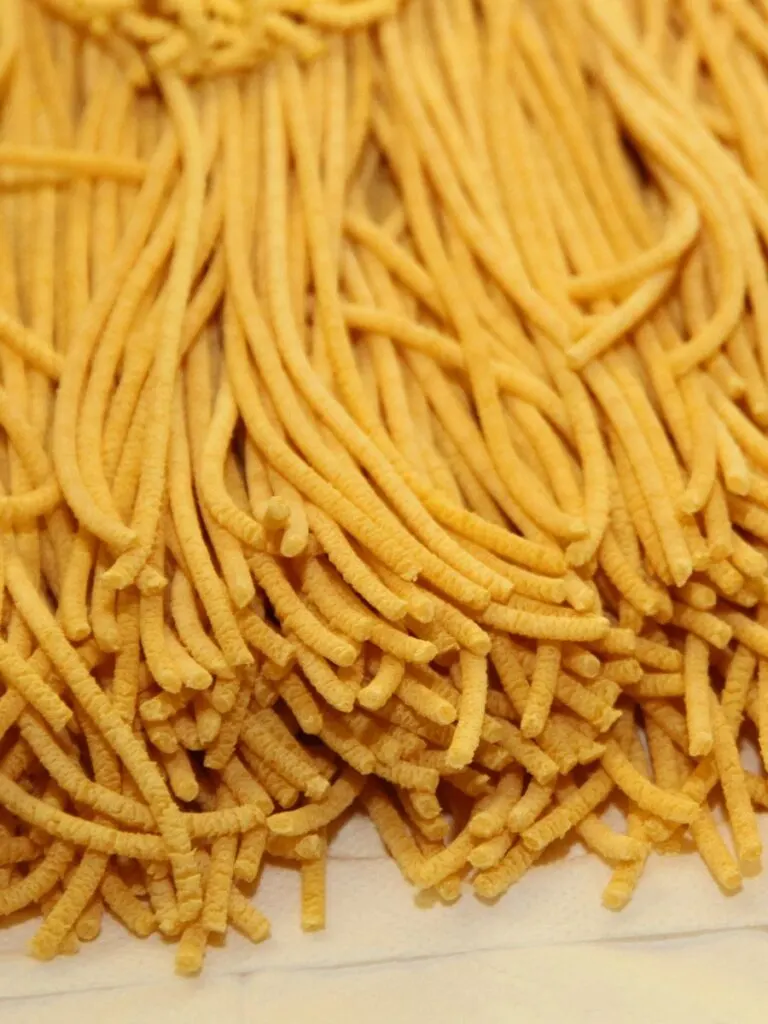
Originating in the Veneto region of Italy, bigoli is a long pasta that resembles large spaghetti, particularly rough to pick up the sauce better.
The rough texture of bigoli allows the sauce to be retained, creating a satisfying and flavorful bite.
Pizzoccheri
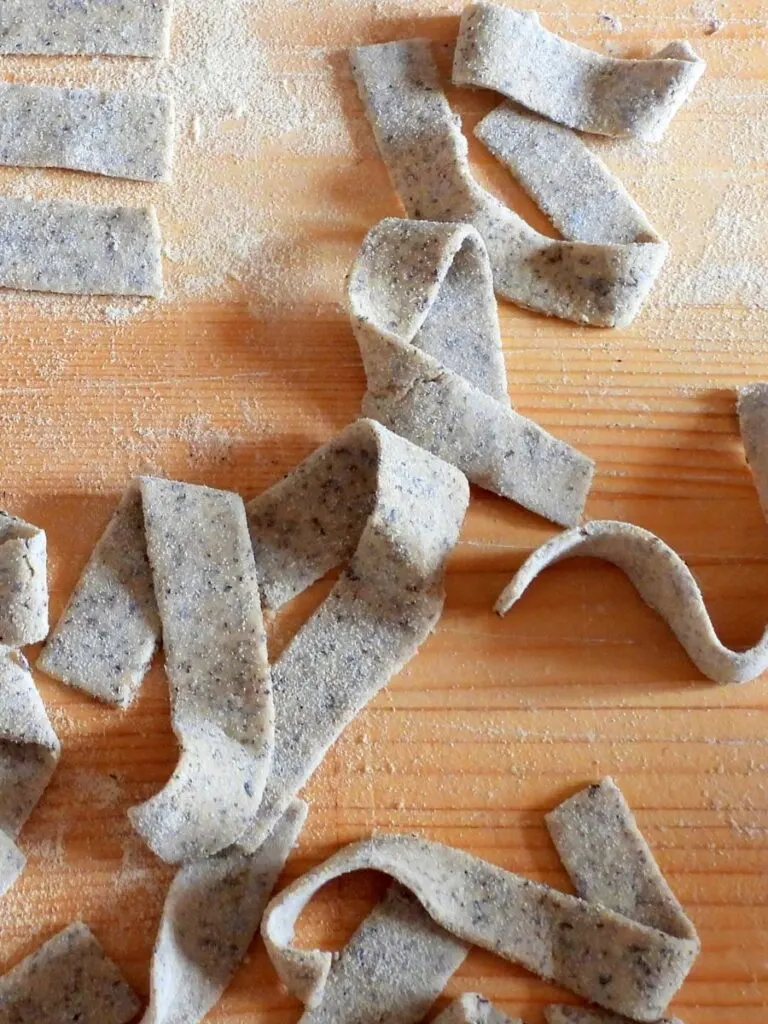
Pizzoccheri is a type of pasta originally from Lombardy, made with buckwheat flour.
The use of this grain give an unmistakable flavor and a darker color, which goes perfectly with the typical recipe with stewed savoy cabbage, potatoes and fontina cheese.
Cavatappi
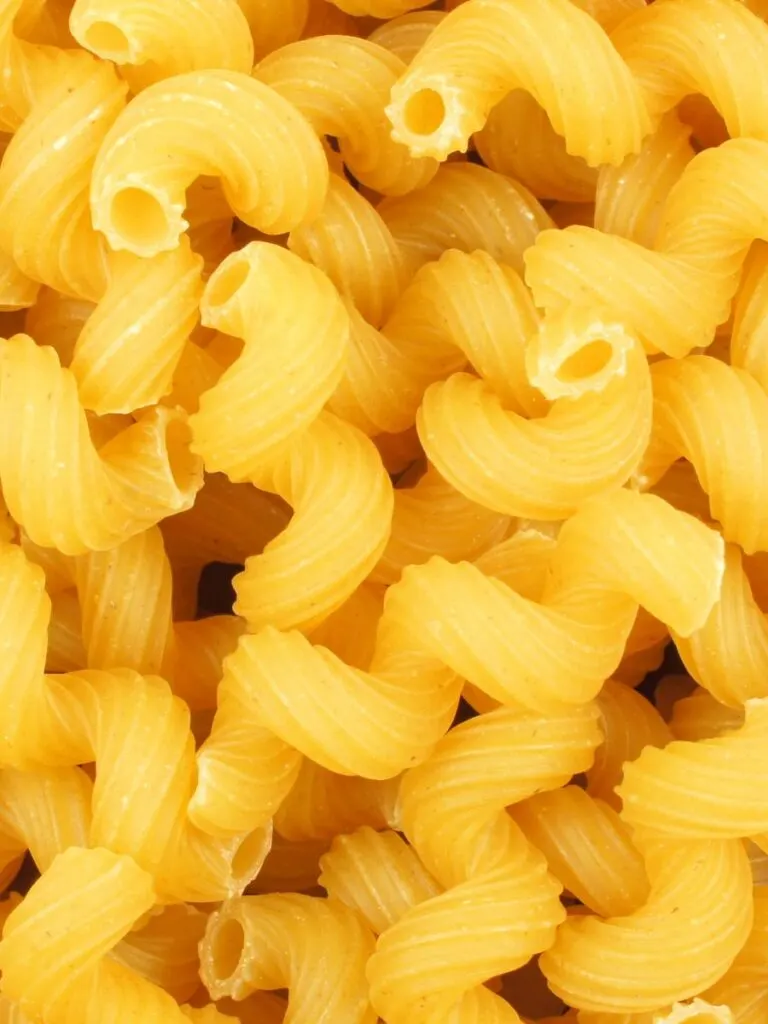
Its name translates to “corkscrew,” which is appropriate given the shape of the pasta.
The unique shape of corkscrews allows them to hold sauces and other ingredients, making them versatile for various recipes such as creamy sauces.
Garganelli

This tube-shaped pasta has its roots in Emilia-Romagna, Italy, and is traditionally made by rolling out sheets of pasta and then cutting them into small squares.
These squares are then rolled onto a wooden dowel to create the quill shape, giving it a unique texture that is chewy and tender.
Fregola

Fregola has a unique and rich history. Also known as fregula, this small, spherical pasta originated in Sardinia.
Once cooked, fregola has a slightly chewy texture, perfect for soups but also for salads.
Foglie d’ulivo
Olive Leaves are pasta native to the southern regions of Italy.
The unique shape of this pasta resembles that of an olive leaf, with a wide, flat surface and a pointed end.
It is often used in rustic and traditional dishes that enhance the flavors of the local region.
For example, in Apulia, olive leaves are often served with rich tomato or meat sauces, while in Basilicata, they are paired with earthy and spicy ingredients such as lamb and chili peppers.
Maltagliati
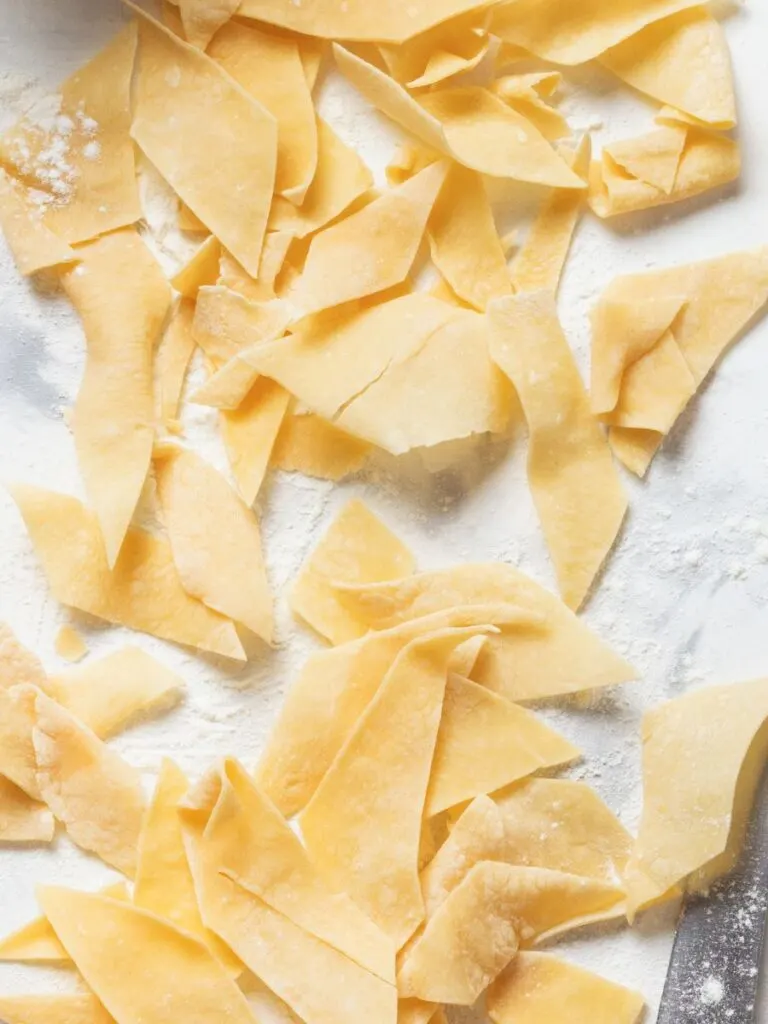
Maltagliati originated in Northern Italy.
The name “maltagliati” literally means “badly cut” or “poorly cut,” reflecting the irregular shape and size of the dough.
Traditionally, maltagliati were made from the scraps of other pasta doughs.
The rough texture and irregular edges of maltagliati make it an ideal pasta for hearty, thick sauces such as sausage ragout.
Sedanini

Sedanini are tubular pasta similar to rigatoni in shape but are thinner.
The name “sedani” means celery in Italian, a nod to the pasta’s original use as a stuffing for stuffed celery.
Passatelli
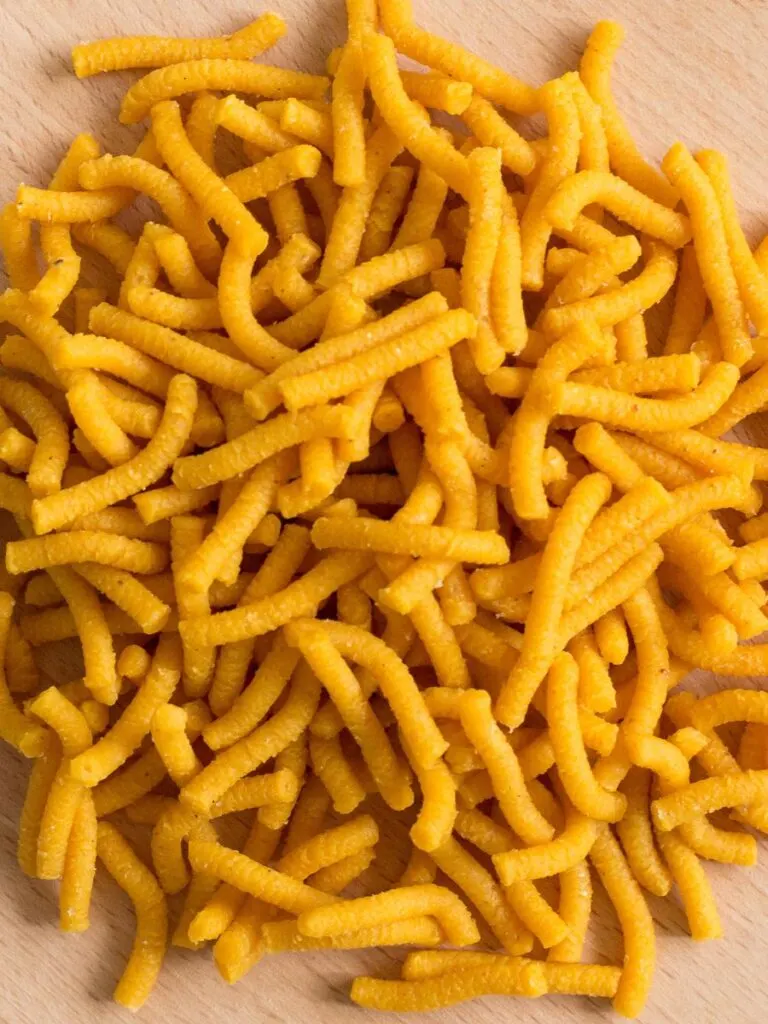
The dough is made of breadcrumbs, Parmesan cheese and eggs, however, due to its shape and use it falls into the pasta category.
This pasta format is particularly popular in the Italian region of Emilia-Romagna and is served in a rich meat broth, often served for Christmas.
Long pasta
Spaghetti

Spaghetti is the most popular type of pasta not only in Italy but throughout the world.
They adapt to many kinds of sauces, such as spaghetti with tomato sauce and white sauces like spaghetti alla nerano.
Capelli d’angelo

Angel hair, also known as capellini, is a type of pasta originating in Naples.
This pasta is fine and delicate, resembling thin strands of hair, and is typically served with light sauces, such as olive oil and garlic.
It can also be used in soups by being broken up.
Due to its delicate texture, angel hair cooks quickly, so when preparing it, one should always be careful when cooking it best served al dente
Bucatini

Bucatini features a unique central cavity that sets them apart.
This design allows the pasta to hold more of the sauce, I love making bucatini all’amatriciana.
Linguine

Native to Liguria, in the coastal city of Genoa.
Its name comes from the Italian word “lingua,” meaning tongue, which is appropriate given its flattened spaghetti shape-
Linguine is perfect for pairing with various sauces, from simple tomato-based sauces to those made with seafood such as clams or shrimp.
In fact, linguine with clams is a classic Italian recipe.
Mafaldine

Mafaldine is a ribbon-like pasta named after Princess Mafalda of Savoy.
They are flat-shaped with wavy edges that add texture to any dish.
The shape of the pasta allows it to hold denser sauces, making it perfect for hearty dishes, in fact I love making this cauliflower pasta with this pasta shape.
Vermicelli
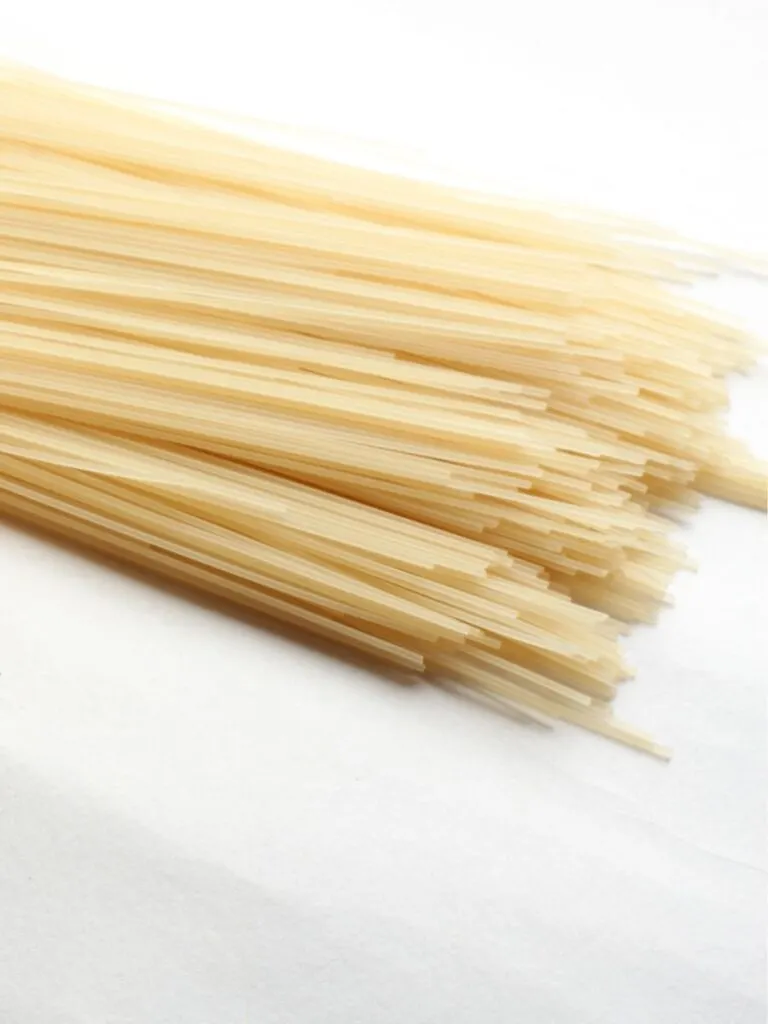
Vermicelli is a thin and delicate pasta format. Its name comes from the Italian word “little worms,” which describes its long, thin appearance.
Vermicelli are often paired with seafood, but their size also makes them a popular choice for soups if broken up.
Fettuccine
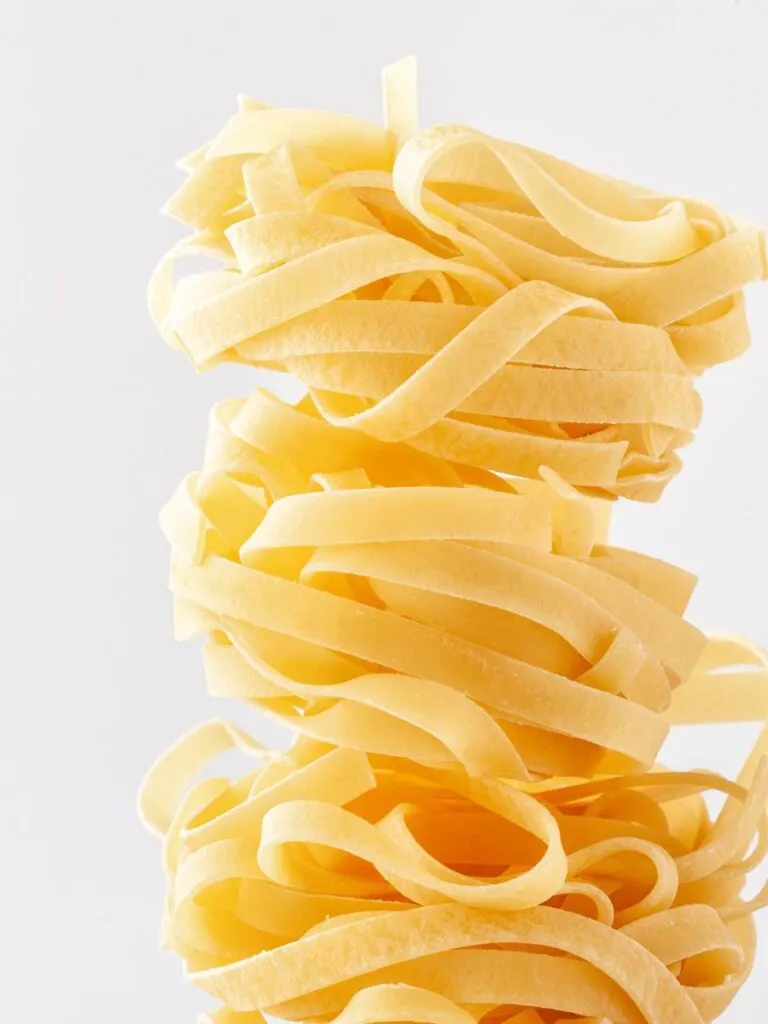
Fettuccine, whose name comes from the Italian word “fettuccia,” meaning small ribbon, is a wide, flat pasta format originating in central Italy.
One of the most iconic dishes is fettuccine Alfredo, which originated in Rome.
My favorite way to use fettuccine is this pasta with broccoli, black trumpet pasta, or this creamy pesto pasta.
Pappardelle
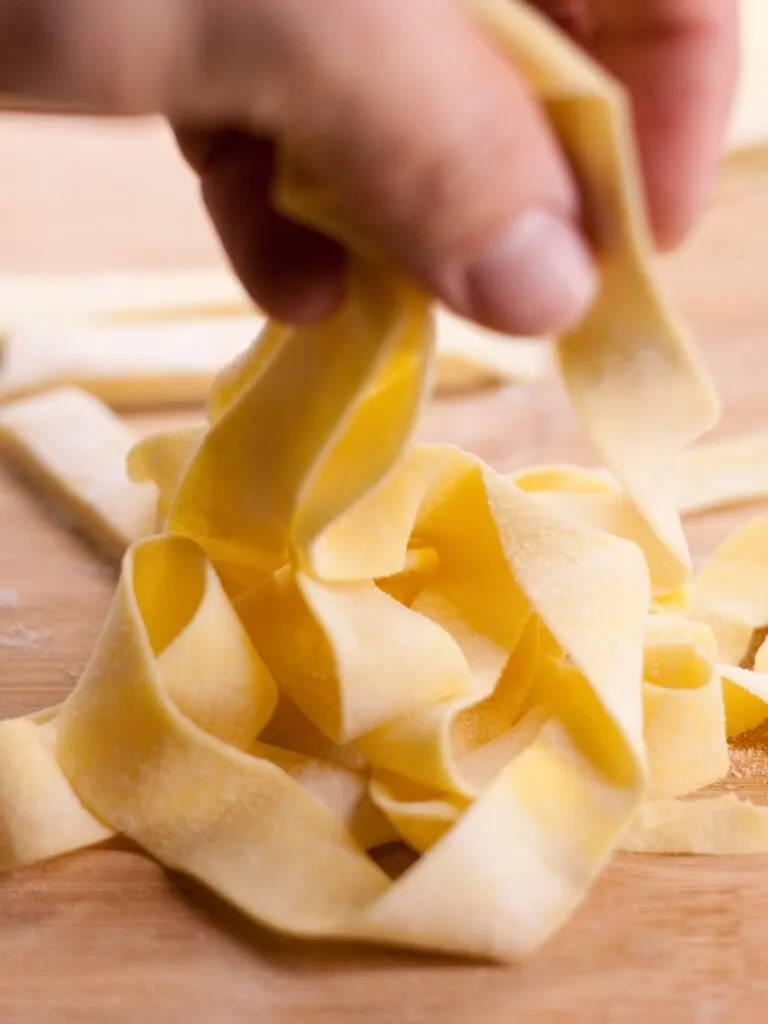
Pappardelle is another wide, flat pasta format.
The name “pappardelle” comes from the Italian word “pappare”, which means to gobble or eat greedily.
This pasta certainly lives up to its name, as it is hearty and perfect for absorbing rich sauces such as pappardelle with mushrooms.
Spaghetti Alla Chitarra

Spaghetti alla chitarra is an egg pasta format native to Abruzzo.
The name refers to how the noodles are formed, with a tool very similar to the strings of a guitar.
This pasta has a square shape and a slightly rough texture, perfect for retaining the sauce.
Tagliolini
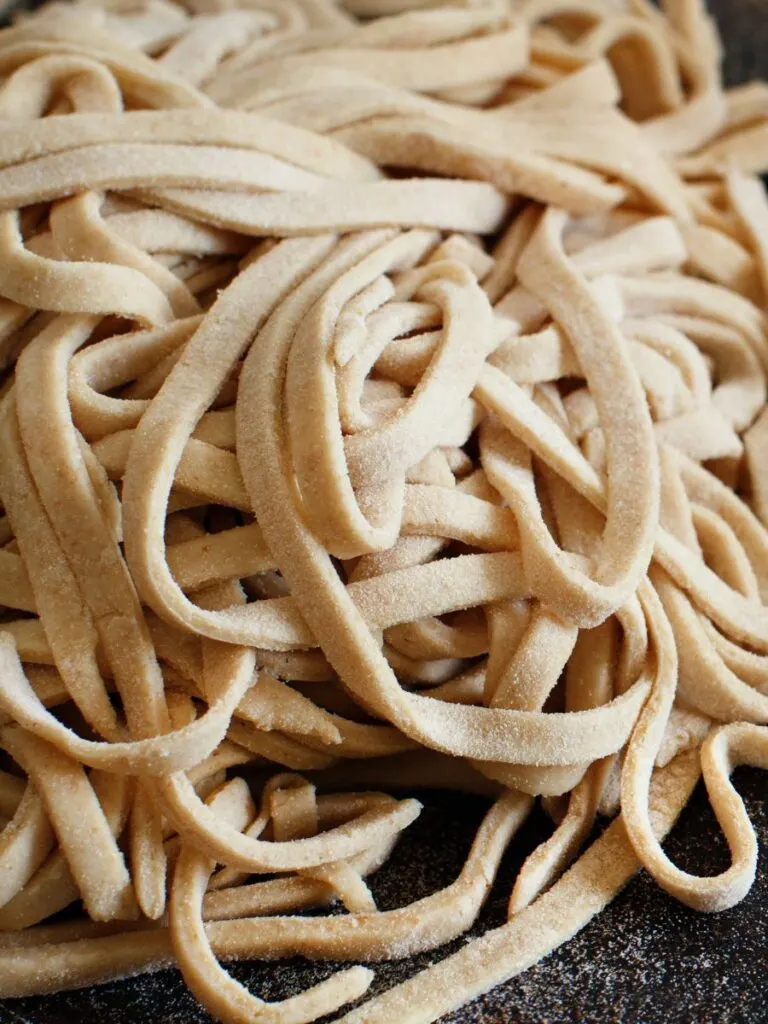
Tagliolini, a type of egg pasta, is a popular pasta format originating in the northern regions of Italy.
It is similar to fettuccine but much thinner.
Bavette
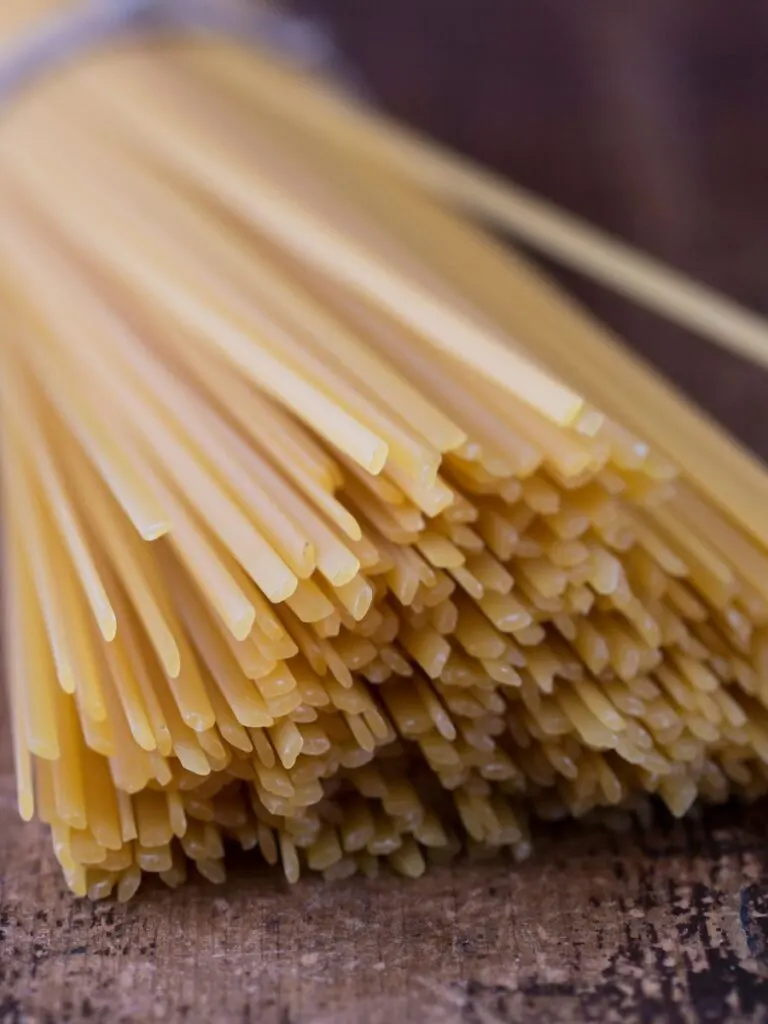
The origins of bavette date back to Genoa, a Northern Italian city known for its seafood and pesto.
Bavette is said to have been created as a variation of linguine.
Its long, flat shape is perfect for meat or vegetable sauces.
Spaghettoni

Spaghettoni, which means “thick spaghetti” in Italian, is a thicker variation of the classic spaghetti shape.
While traditional spaghetti is about 1.8 millimeters in diameter, spaghettoni can range from 2.1 to 2.5 millimeters.
Thicker noodles also adapt well to thicker and more consistent sauces, adding a satisfying texture and flavor to each bite.
Pici

Pici is a traditional Tuscan pasta.
It is a long, cylindrical pasta that is pulled by hand without the use of a pasta machine, like fat spaghetti.
Fedelini

Fedelini are known for their thin and delicate texture. Its name comes from the Italian word “fedele”, which means loyal or faithful, and reflects its ability to maintain its shape and integrity during cooking.
What makes it special is the very thin thickness and the fact that they are egg-based.
This particular pasta is typically served with light, delicate sauces that complement its fine flavor.
Stuffed Pasta
One of the most innovative preparations of Italian pasta is stuffed pasta, which consists of pasta with delicious filling inside.
Cappelletti

Cappelletti has a unique shape resembling a small hat and are filled with a mixture of ground meat, Parmesan cheese, and spices.
This pasta i can be found all over Italy and are especially common in Emilia-Romagna, where they are often served on special occasions and at family gatherings typically in broth.
Ravioli
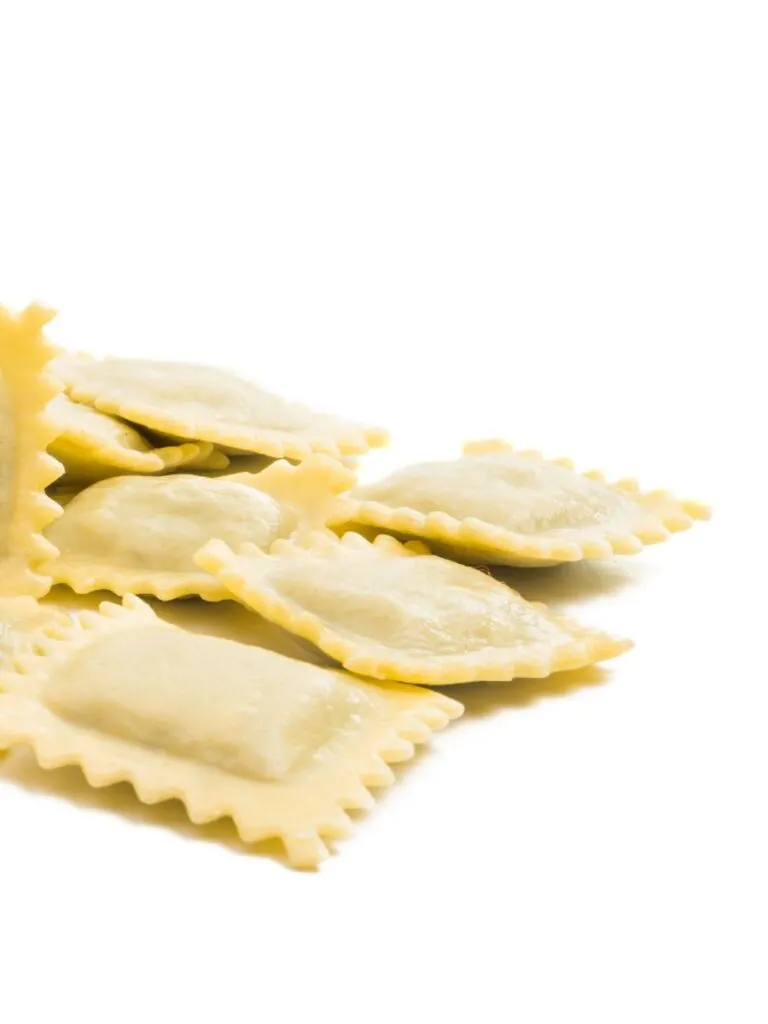
This pasta consists of small square-shaped pockets of dough filled with various delicious fillings, such as cheese, spinach, or meat.
Ravioli can be served with various sauces, such as tomato or pesto.
Tortellini
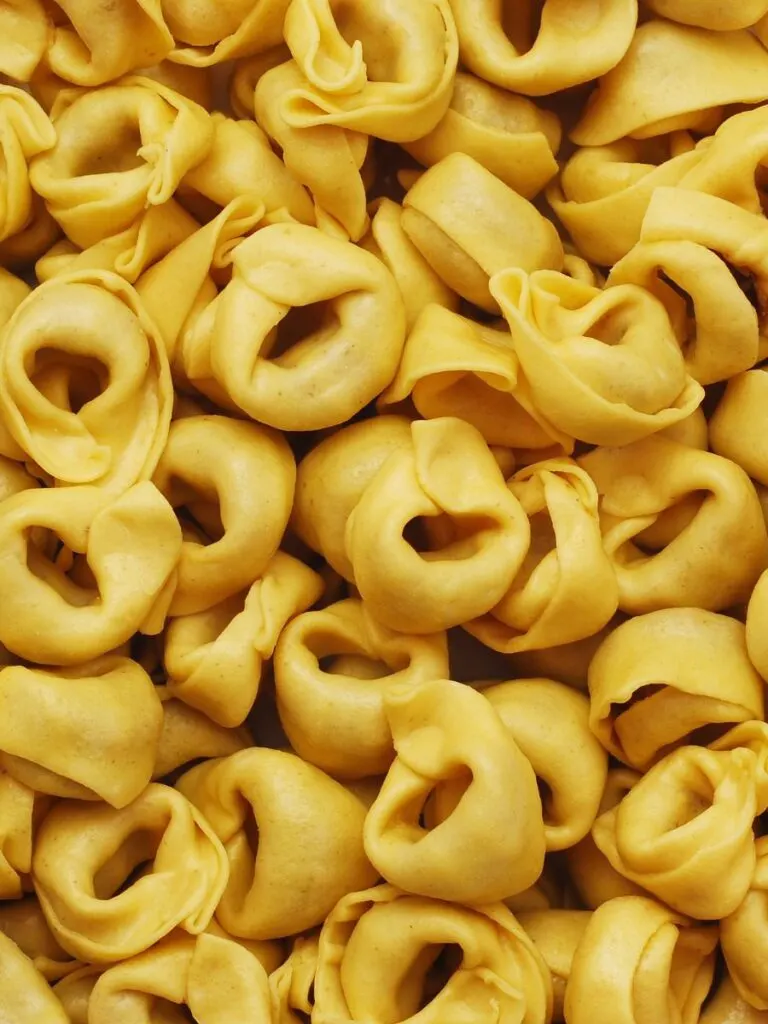
The origins of tortelloni are somewhat controversial: some claim they were created by a cook in Bologna, while others believe they were first prepared in Modena.
A common variation is the ricotta and spinach tortelloni, which combines ricotta and spinach for a creamy, savory flavor with the preparation of a tortellini bigger.
Fagottini

The word fagottini means little bundles or packages, which well describes the shape of the dough.
They are made by folding small squares or circles of dough around a filling of meat, cheese, vegetables, or a combination of these ingredients.
The edges of the dough are then pinched together to seal the filling inside.
Casoncelli
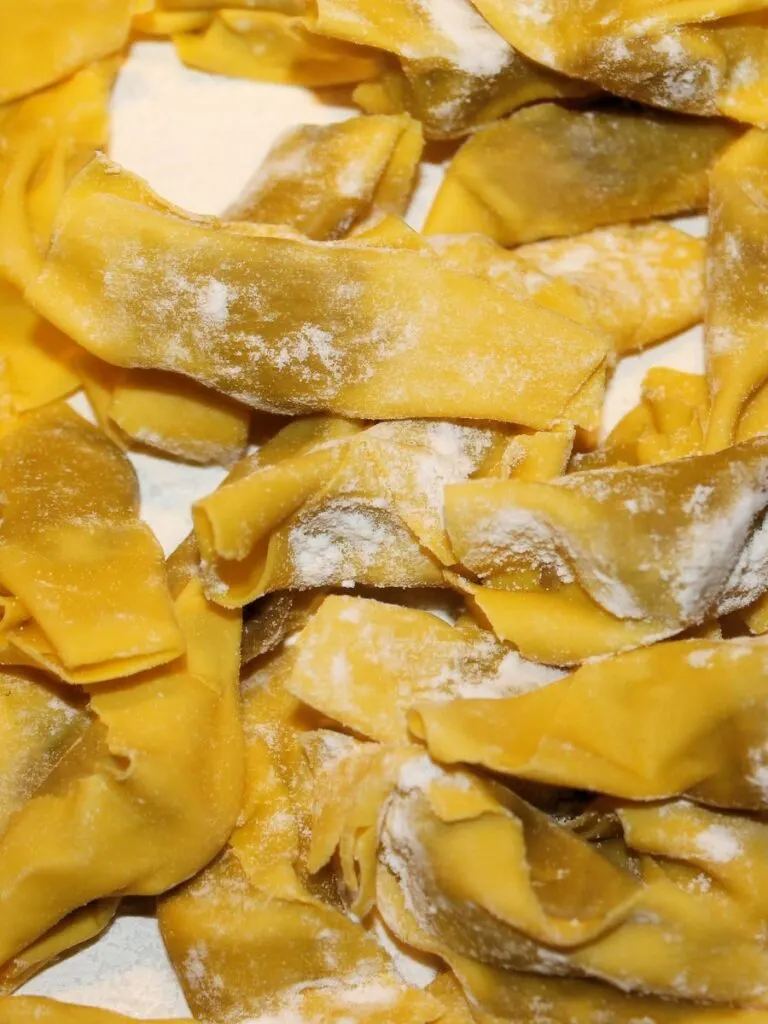
Casoncelli, a small pasta filled, originated in Lombardy.
The shell typically consists of two sheets of dough pressed together at the edges.
This versatile pasta can be served in various ways, such as with a simple butter and sage sauce or with a rich tomato sauce.
Mezzelune

Mezzelunas, which translates to “half moons” in Italian, are crescent-shaped pasta filled with a variety of ingredients depending on the region of Italy.


JENNIFER R OSBORN
Tuesday 2nd of May 2023
You've introduced me to pasta I had never heard of before, which I didn't think was possible. I will choose pasta over pretty much any other meal!
Angie
Thursday 4th of May 2023
I am Italian, and there are so many kinds of pasta, each pasta has its own sauce.
Sarita
Tuesday 2nd of May 2023
Such a helpful post. I was 50 before I realized that what I had always called spaghetti was, in fact, spaghettini!
Chichi
Monday 1st of May 2023
Wow! This a comprehensive list of pasta types. There are many I didn’t know about. I wondering which of the newly learned ones I should try first.
Claire
Monday 1st of May 2023
such an amazing list of pasta, that made me realise that we tend to stick with the three shapes we love. Are picks are always Cavatappi, Linguine, and Farfelle.
Can't wait to try some other shapes.
My kids love creamy sauces and I am a big fan of olive oil based sauces, so I think we will look at some of the long pastas that you talked about.